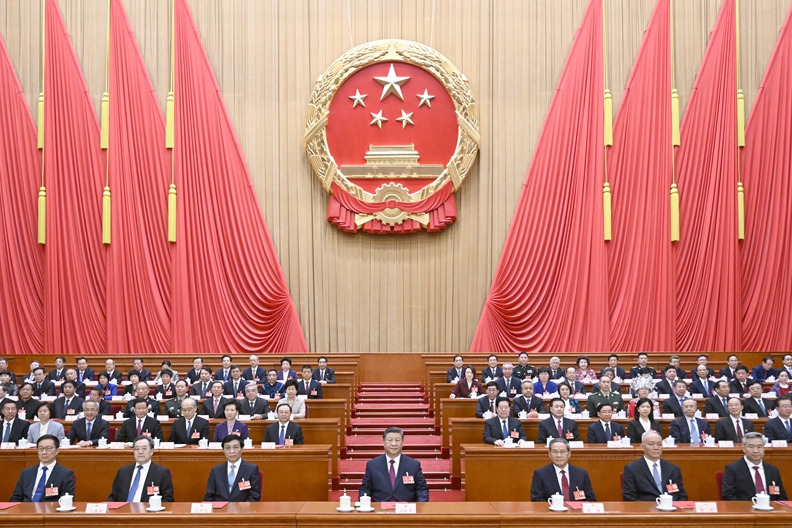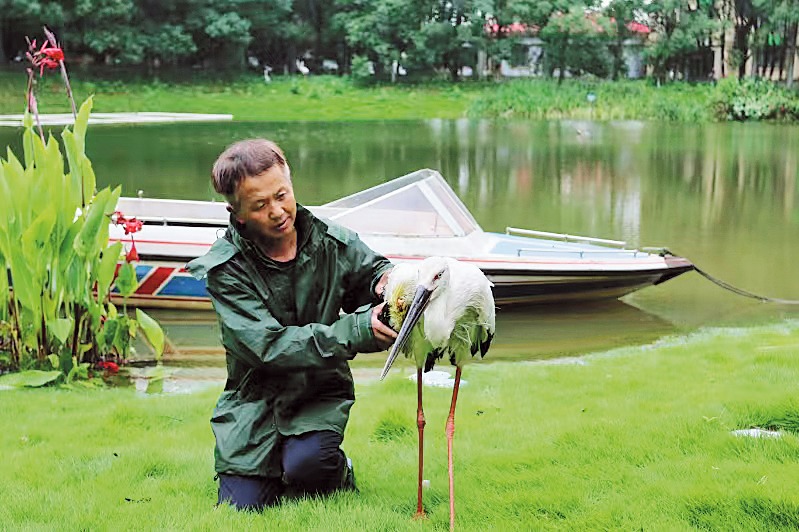Yangjiang scales up green energy plans

Yangjiang, Guangdong's largest energy city, is striving to become a "green energy capital" with international influence, driving the green transformation of the Guangdong-Hong Kong-Macao Greater Bay Area.
As a national new energy base, the eastern coastal city is leveraging its strengths to accelerate the construction of a diverse energy system, said Yu Jinfu, mayor of Yangjiang.
"The city government will fully utilize its resource advantages to promote the simultaneous development of multiple energy sources, including wind, solar, thermal, hydropower, gas, nuclear and energy storage industries in the months to come," said Yu, who is also a deputy to the 14th National People's Congress.
Yangjiang has reached a total installed electricity capacity of more than 22.5 million kilowatts, with clean energy accounting for over 70 percent, according to Yu. Among them, the installed capacity of offshore wind power has surpassed 6 million kilowatts, and the figure is expected to exceed 10 million by the end of the year, reinforcing Yangjiang's position at the forefront of China's offshore wind power development.
"Yangjiang generated more than 90 billion kilowatt-hours of electricity last year, providing 79 percent of its power to the Greater Bay Area, making it a stable energy supply base closest to the region," Yu said.
The city is also accelerating the development of a full-chain international wind power equipment manufacturing base. Efforts are focused on building "one port and four centers", including an offshore wind power home port, wind power research and development, testing and certification, big data, and operation and maintenance centers.
Yangjiang aims to become one of the country's leading industrial clusters, with the most integrated supply chain, the most comprehensive equipment and the most dynamic offshore wind power sector.
To enhance its international competitiveness, Yangjiang is promoting the deep integration of innovation, industry, capital and talent.
The city plans to establish the world's first offshore wind power academy and construct an offshore wind power laboratory, along with other scientific and technological innovation platforms.
To support these efforts, Yangjiang has set up a 12 billion yuan ($1.71 billion) offshore wind power industry development fund.
The city has already implemented and transformed major technological achievements, including the world's first typhoon-resistant floating offshore wind turbine.
In recent months, offshore wind turbines and installation platforms manufactured in Yangjiang have been exported to Vietnam, the United Arab Emirates and Serbia.
Yangjiang is also accelerating the development of the China (Yangjiang) Energy Storage Equipment Industrial Park to promote the "green electricity plus intelligent manufacturing" model.
The city seeks to attract enterprises involved in new energy vehicles, energy storage equipment and related industries from the GBA to establish production facilities, branches and subsidiaries.
"The city will work to create a zero-carbon supply chain and accelerate the coordinated and integrated development of power and computing industries, providing support for green industries and the digital economy in the Greater Bay Area," Yu said.
Meanwhile, Yangjiang is exploring a three-dimensional development model of "ocean ranch plus offshore wind power" to foster a green marine economy and drive innovation in the ocean industry.
The city has accelerated the construction of offshore pastures and "blue granaries" in recent years, developing a modern marine fishery industry with Yangjiang characteristics.
Last year, the city's total output of aquatic products exceeded 1.23 million metric tons.
Additionally, as a major knife and scissor production hub, Yangjiang is working to upgrade its traditional industries through a strategy of "innovation plus intelligent manufacturing plus branding".
"We will continue to modernize the hardware knife and scissor industry, introduce new machinery, boost competitiveness and work toward establishing the city as 'the world's hardware knife and scissor capital' in the coming years," Yu said.
According to official statistics, Yangjiang produces more than 5,000 types of hardware, knives and scissors, with industrial output exceeding 55 billion yuan. The sector accounts for more than 75 percent of China's total production and 85 percent of its exports in the category. Yangjiang's knife and scissor products are now sold in more than 130 countries and regions worldwide.
zhengcaixiong@chinadaily.com.cn




































